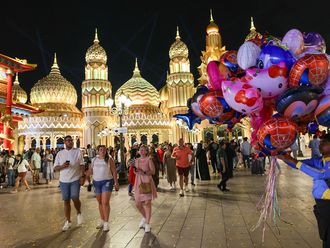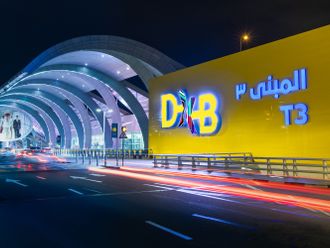Remains of old Islamic artefacts and buildings, including a mosque and a fence dating back to the 14th and 16th centuries AD, were unearthed by a Japanese archaeological expedition at the Loulouiyya Archaeological site in Khor Fakkan, bearing evidence that the area provided a major linkage in the international trade network between the Eastern Arab ianPeninsula and Eastern Asia.
Dr Sabah Abboud Jasim, Head of the Local Archaeological Expedition and archaeology expert at the Directorate of Antiquities of the Sharjah Department of Culture and Information (DCI), yesterday told Gulf News: "Excavation works were launched at the site by the Japanese Archaeological Expedition around three years ago, and significant findings have been unearthed at the site during the past two excavation seasons."
He said that pottery and mineral artefacts, including bracelets and other accessories, were found at the site. "The artefacts unearthed at the site were imported from China and Iran. This is an evidence that there were strong trade ties between these two countries and the Arabian Peninsula."
Experts studied the remains of pottery and mineral items found in the same area. "The studies showed that some residential structures might have been built during the 14th and the 16th centuries AD."
Dr Jasim said that Khor Fakkan was known as an important seaport in the region for centuries. "The region was inhabited by Arab tribes who were involved in commercial activities."
Headed by Dr Tatsu Sasaki of the University of Kanazawa in Japan, the expedition completed its excavation work at the Islamic Archaeological site at the Al Loulouiyya Area in Khor Fakkan.
Dr Jasim noted that the remains of residential structures dating back to the middle of the 20th century were also found near the Entrance to the Khor Fakkan seaport, about three miles away from the Loulouiyya Archaeological site.
He said that the expedition had recently conducted a month-long excavation at the new site near the entrance to the seaport.
He added that the team had also conducted a survey of the region to locate new Islamic archaeological sites and add them to the region's archaeological map. "We hope that more findings will be unearthed at the new site."
Old Islamic artefacts found in Khor Fakkan
Remains of old Islamic artefacts and buildings, including a mosque and a fence dating back to the 14th and 16th centuries AD, were unearthed by a Japanese archaeological expedition at the Loulouiyya Archaeological site in Khor Fakkan, bearing evidence that the area provided a major linkage in the international trade network between the Eastern Arab ianPeninsula and Eastern Asia.












